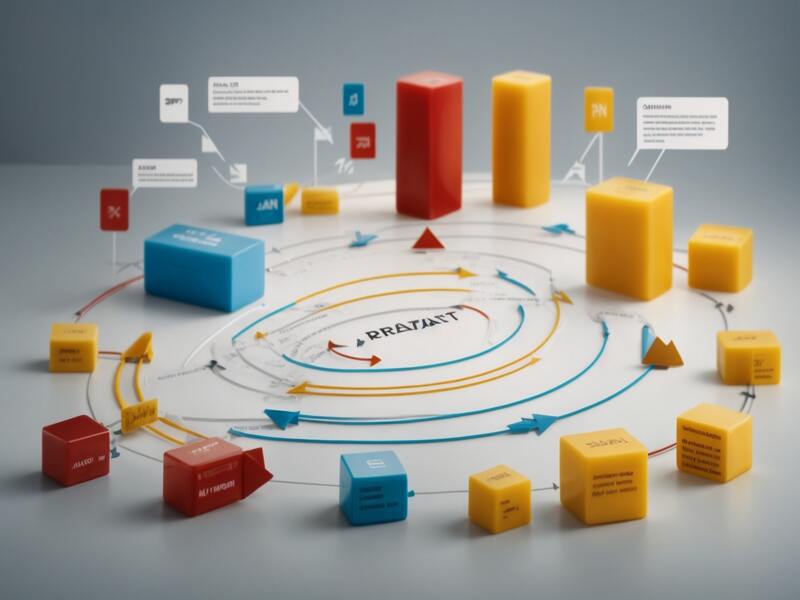What is SAP RAR?
What is SAP RAR?
With SAP Revenue Accounting and Reporting (RAR), organizations can more efficiently report revenue according to accounting standards such as IFRS 15 and ASC 606 while automating revenue accounting procedures to reduce errors or noncompliance risks with this unified platform for managing recognition, allocation and reporting of revenues.
With SAP RAR, businesses can access real-time revenue data that allows for improved decision-making regarding income sources. An all-encompassing suite of reporting capabilities also is offered so firms may create reports for regulatory, management and finances purposes.
ERP, CRM and Hybris are among the SAP technologies which may be integrated with SAP RAR to help firms manage revenue processes from end to end. Integration between preexisting systems and processes and SAP is simplified prebuilt interfaces between non-SAP systems.
Organizations can utilize SAP Revenue Accounting & Reporting (RAR) to enhance their financial reporting and analytics, streamline revenue management operations and mitigate compliance risk more easily than before.
Definition of SAP RAR
SAP Revenue Accounting and Reporting (RAR) provides organizations with an easy solution for tracking revenue according to applicable accounting standards and regulations.
RAR serves as a centralized platform that automates revenue recognition, allocation and reporting processes while increasing transparency, efficiency and accuracy in revenue accounting processes.
SAP RAR supports multiple revenue recognition methodologies such as concluded contract method, percentage completion method and milestone method as revenue recognition methodologies for revenue accounting purposes.

Furthermore, this application also features tools for contract administration, performance obligation identification and transaction price determination.
Solution features comprehensive reporting capabilities, from regulatory reports, financial reports and management reports. These reports help organizations make more informed decisions and boost financial performance with insight into revenue performance trends and variances.
SAP RAR can assist organizations in streamlining their revenue accounting and reporting processes, while simultaneously mitigating errors, risks, and increasing compliance with accounting standards and regulations.

SAP RAR Training

SAP RAR Tutorial
SAP RAR Tutorial RaR, or SAP Revenue Accounting and Reporting, provides an effective means for SAP environments to monitor revenue recognition. In this video tutorial you will explore everything SAP RAR offers from its main features to benefits as well as its place within its surrounding ecosystem.
SAP RAR’s rar module will teach students to configure and use its system, including how to identify revenue recognition situations, set up account determination procedures, and generate recognition rules for revenue recognition situations.

Modules of SAP RAR Revenue Recognition Process, covers all approaches and techniques for handling changes to rules or situations when recognising revenue in SAP RAR with particular attention paid to how changes affect rules or situations in terms of approaches taken, rules altered or situations created that impact rules changes also presented.
Techniques on creating premade reports as well as customized ones in SAP RAR Report Creation usage contracts are discussed as are interactions with other modules within SAP and worldwide usages for SAP RAR is some advantage.
What Does SAP RAR Technology Do and Where Can it be Found?
SAP Income Financial and Reporting (RAR) technology assists companies in meeting ASC 606 and IFRS 15 reporting rules when reporting and recording income. You can view real time income data while automating revenue recognition to generate financial records that comply with accounting laws.
One way the SAP RAR technology is applied is in data backup applications.
SAP RAR allows companies to efficiently recognize revenue. It does this by calculating how much revenue should be recognized based on contract terms and performance obligations that have been fulfilled.
Make sure that accounting rules are observed: SAP RAR can assist companies in adhering to ASC 606 and IFRS 15 accounting rules by giving them an easy way to recognize income that adheres to these standards.
Real-Time Revenue Data Access: SAP RAR provides businesses with real-time access to revenue data so they can keep tabs on the success of their revenue efforts and quickly identify any problems or inconsistencies in real time.

Producing financial reports: SAP RAR generates financial reports which adhere to accounting rules.
Better Planning and Forecasts: SAP RAR offers businesses accurate and up-to-date income information that enables improved planning and forecasting processes.
Automating Financial Close: SAP RAR’s automation can streamline many manual steps involved with closing books more quickly and accurately for businesses. This means quicker book closure times.
How SAP RAR works
SAP RAR allows businesses to efficiently create and track contracts with clients by writing down its rules, price, and duties to be performed by each one. Furthermore, this software examines every deal’s details to recognize revenue when appropriate.
Calculates price of deal and allocate revenue against performance obligations records revenue over time as obligations are fulfilled.
Revenue Distribution: SAP RAR allows businesses to divide their income across cost areas, teams or business groups in order to identify which aspects of their operation are producing the greatest return for investment. In doing this, businesses are better able to determine which parts are driving more profit than others.

Reporting: SAP RAR offers real-time reports and data to assist businesses in understanding income, allocating it across departments and making predictions on its distribution. This allows businesses to make smarter financial choices while anticipating any issues before they arise as big problems.
Compliance: SAP RAR assists businesses in adhering to financial rules such as IFRS 15 and ASC 606. With its complete audit trail of how income was recognized and distributed, companies can show inspectors or officials they are adhering to regulations.
SAP Revenue Accounting Reporter (RAR) is an all-in-one system for tracking and reporting revenue for businesses. This software makes revenue accounting simpler, works more efficiently, and adheres to accounting laws more reliably than before.

SAP RAR Online Training

What are the Advantages of SAP RAR
RAR sap module offers an approach for revenue recognition that conforms with standards such as ASC 606 and IFRS 15. Thus helping organizations comply with accounting rules such as these.
SAP RAR automates the revenue recognition process, determining what amount should be recognized according to contract conditions and fulfilled performance commitments.
SAP RAR gives businesses real-time insight into their revenue data so that they can monitor how it’s performing and identify any anomalies quickly.
Financial Closing Process Optimization: SAP RAR streamlines this step in firms’ financial closure processes by automating multiple manual activities — journal entries and reconciliations among others – for faster book closing and greater precision in book keeping.
SAP RAR makes planning and forecasting easier to its accurate revenue data, providing companies with accurate forecasting information that allows for improved planning and forecasting processes.
Reduce Risk: SAP RAR can assist organizations in mitigating risk by offering an accounting-compliant revenue recognition framework, helping organizations manage errors and inconsistencies which might otherwise cause restatements or other complications using it could prevent this scenario altogether.
firms using SAP RAR can increase client satisfaction and minimize disputes or chargebacks by sending bills out quickly and correctly to clients.
Businesses may save both time and effort with SAP RAR’s automated functionality for revenue recognition and reporting processes, which eliminates numerous manual processes related to revenue recognition and reporting.
What Is SAP Revenue Financial and Reporting Software andhow to use SAP Revenue Financial and Reporting
SAP SE has released the AP Revenue Financial and Reporting guideline, providing firms with an option for following both IFRS 15 and ASC 606 for revenue recognition and reporting purposes.
This program makes revenue recognition simpler by controlling performance criteria, transaction pricing and revenue recognition over time.
Firms often implement SAP Revenue Financial and Reporting using these steps:
Establish rules and regulations regarding revenue recognition, including performance standards, transaction prices and recognition patterns for revenue recognition in your program. They should follow these regulations exactly.
The application may gather transaction data from financial, CRM and ERP systems in order to set performance responsibilities and transaction prices based on this data.

Revenue Dates: Due dates for revenue payments for transactions are calculated taking into account contract revisions, variable consideration and time-based milestones as per program regulations.
This application offers businesses customized income statements, balance sheets and cash flow statements which reflect how revenue recognition occurs within their firm. Furthermore, reports for individuals can also be generated.
Real-time revenue data provided by this platform enables customers to identify trends, identify opportunities and make informed decisions to enhance financial performance and profitability for companies.
SAP Revenue Financial and Reporting offers businesses a powerful revenue recognition and reporting solution, helping to improve both financial performance and decision-making by automating these processes and providing real-time revenue data.
What are the Features of SAP Revenue Accounting and Reporting
SAP Revenue Accounting and Reporting (RAR) makes revenue recognition and reporting simple in compliance with IFRS 15 and ASC 606. Some key features of RAR:
Revenue Recognition Automation: SAP RAR automatically establishes the transaction price, distributes it among performance obligations, and recognizes revenue over time.
SAP RAR makes complying with accounting standards like IFRS 15 and ASC 606 easier through preconfigured revenue recognition rules and templates, making compliance much simpler.
SAP RAR’s real-time reporting and analytics enable firms to keep an eye on revenue recognition processes and spot any problems promptly
SAP RAR is fully integrated with SAP S/4HANA, SAP CRM and SAP Hybris for easy revenue recognition and reporting.
Businesses can customize SAP RAR’s configuration options to their operations and needs, while its audit trail and revenue recognition paperwork help meet accounting regulations.
Workflows for cooperation and approval With SAP RAR’s collaboration and approval capabilities, firms may simplify revenue recognition while including all parties involved.
SAP RAR’s contract and order administration tools enable firms to streamline client contract administration.
SAP RAR’s revenue forecasting and predictive analytics enable businesses to predict revenues and spot emerging trends more accurately than ever.
Are You Wondering the Best Ways to Learn SAP Revenue Financial and Reporting
Self-learning or self-paced learning refers to an approach of education whereby a student studies on their own without external interference using whatever materials are most helpful to them.
Self-study resources abound, from video lectures and books to tutorials posted online. Due to learner autonomy regarding time, location and speed of study, self-learning often proves more practical and convenient than instructor-led instruction.

Instructor-Led Live Training (ILLT): is an instructional method in which trainees engage in real time, interactive learning with an experienced trainer. Utilising video conferencing technology provides virtual classrooms as an option to traditional classes to conduct live instruction sessions for ILT courses.
Instructor-led live training tends to be more structured and directed than self-learning due to an instructor providing a clear learning path and timely updates about progress made by each individual student.
Engaging in instructor-led live training by asking questions, participating in conversations and working alongside fellow learners makes the experience both engaging and dynamic.

SAP RAR Course Price


Harsha Vardhani
Author